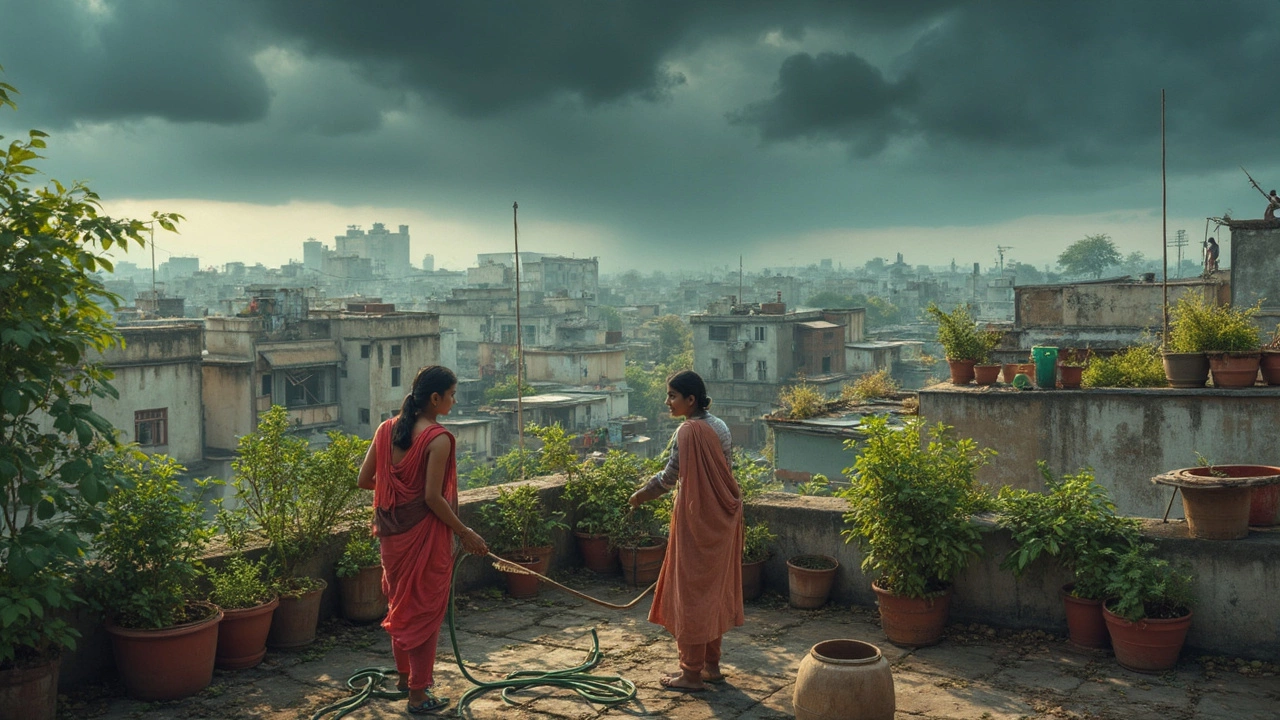Terrace houses seem perfect for a rooftop garden, but there are real downsides nobody talks about. Discover practical drawbacks, from tricky maintenance to neighbor disputes. Learn how weather can wreak havoc and why safety takes center stage. This article will break down common issues, offer workarounds, and help you decide if terrace gardening is worth your effort. It’s not all sunsets and strawberries up there!
Rooftop Garden Drawbacks: What You Need to Know Before You Start
When you think of a rooftop garden, a green space built on top of a building to grow plants, often used in urban areas where ground space is limited. Also known as green roof, it seems like the perfect solution for city dwellers who want fresh herbs, flowers, or veggies. But here’s the truth most blogs skip: rooftop garden drawbacks aren’t just minor inconveniences—they can cost you time, money, and even your roof.
One big problem is weight, the load added by soil, plants, water, and containers on a structure not designed for it. A single cubic foot of wet garden soil can weigh over 100 pounds. Add a few large planters, a rainstorm, and you’re putting pressure on beams and supports that weren’t built for this. Many buildings in India, especially older apartments, weren’t engineered for rooftop gardens. If you skip a structural check, you risk cracks, leaks, or worse.
Then there’s waterproofing, the system that keeps water from seeping into the building below. Even the best soil mix will hold water, and roots will find tiny cracks. If your roof wasn’t properly sealed before planting, you’ll see stains on ceilings, peeling paint, or mold in your living space below. Fixing that after the fact? It’s expensive. And it’s not just about rain—overwatering your plants is just as dangerous.
Maintenance, the ongoing work needed to keep a rooftop garden alive and safe is another hidden cost. Unlike a backyard garden, you can’t just step outside. You’re climbing stairs or using an elevator to reach it. That makes watering, weeding, and checking for pests more of a chore. In hot Indian summers, your plants dry out fast. Wind on rooftops dries soil quicker too. And if you’re away for a week? Your garden could die before you get back.
Drainage is another issue. If water can’t escape, it pools. That leads to root rot, attracts mosquitoes, and can damage the roof membrane. Many people use regular garden soil on rooftops—big mistake. It compacts, blocks drainage, and adds unnecessary weight. You need lightweight mixes with perlite or coconut coir, but those cost more and aren’t always easy to find locally.
And let’s not forget sunlight. Rooftops get full sun all day, which sounds great—until your plants burn. Or worse, your balcony faces north and gets almost no light. You can’t control the sun’s path, but you can pick the wrong plants and end up with a patch of dead soil.
Some think rooftop gardens are eco-friendly by default. But if you’re using plastic pots that last five years and then go to landfill, or buying imported soil mixes with high carbon footprints, you’re not really helping the planet. Real sustainability means choosing durable, local, and reusable materials.
Still, people do it—successfully. But they don’t ignore the downsides. They plan. They test. They start small. The posts below show real cases: how people fixed leaky roofs after planting hydrangeas, why drip systems fail on windy terraces, how soil amendments help with weight issues, and what plants actually survive the heat and wind. You’ll find what works, what doesn’t, and how to avoid the mistakes others made the hard way.
